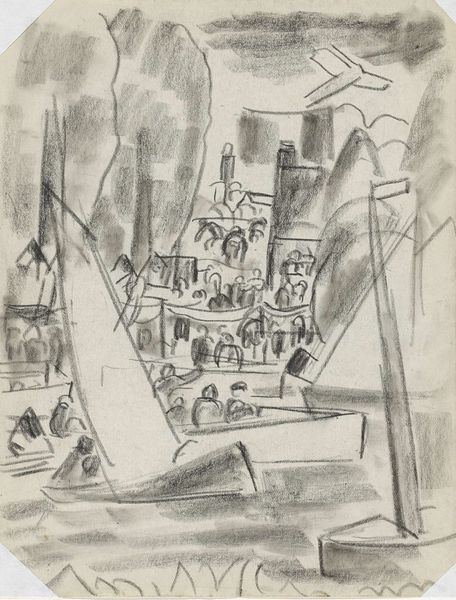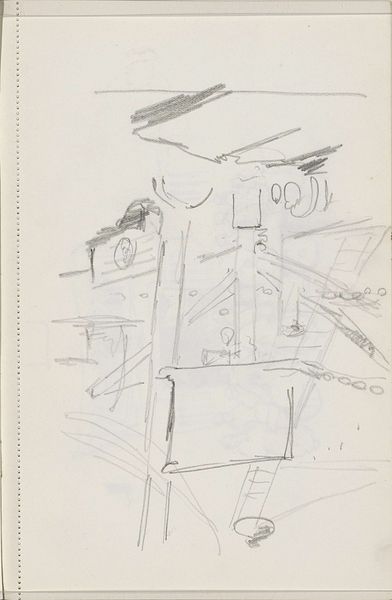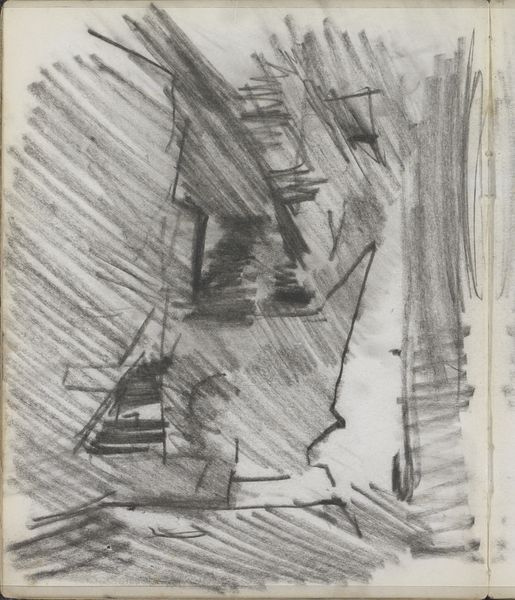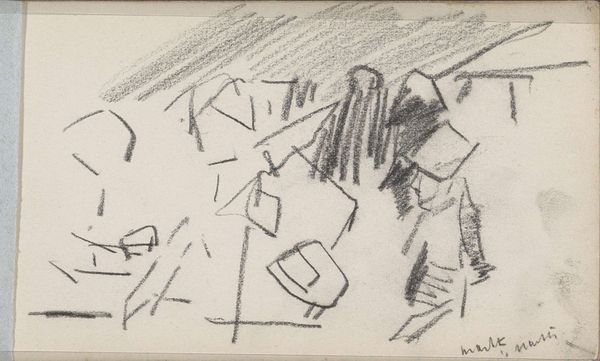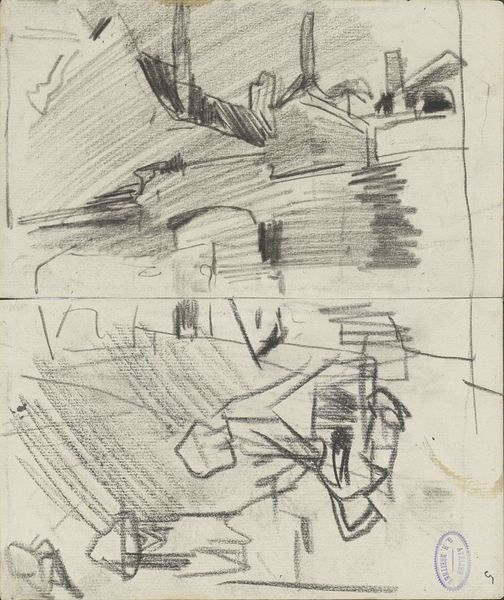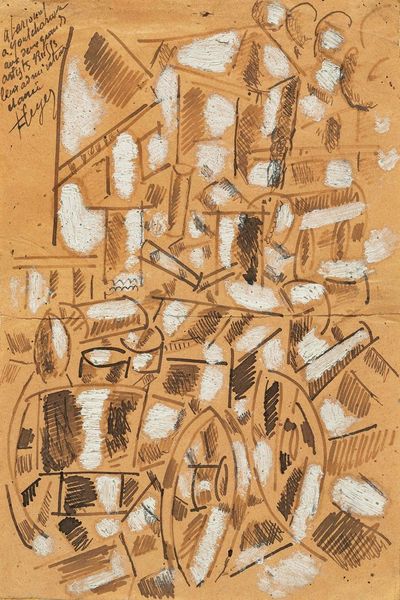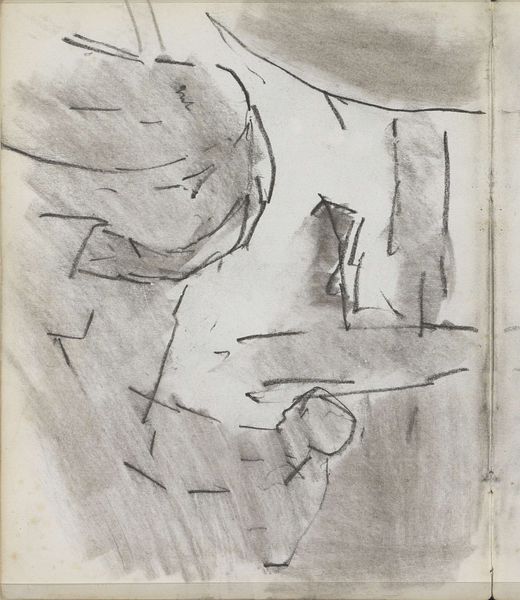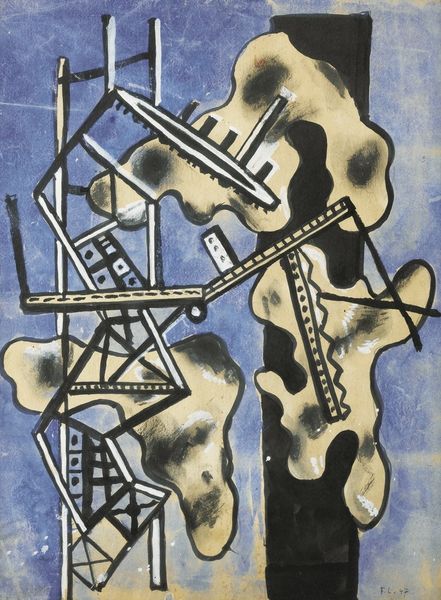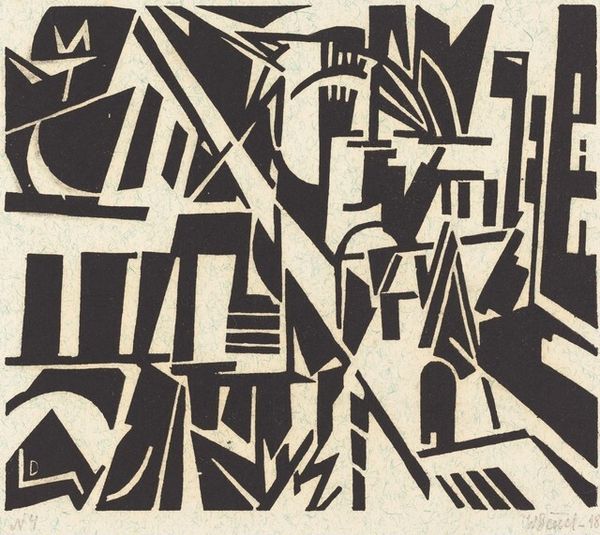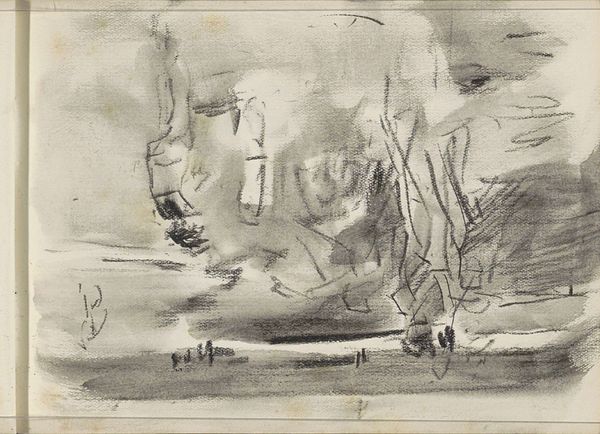
drawing, pencil
#
drawing
#
cubism
#
geometric
#
pencil
#
cityscape
#
modernism
Copyright: Albert Gleizes,Fair Use
Editor: So this is Albert Gleizes' "Vers le port," or "Towards the Port," a pencil and drawing. I’m struck by how geometric everything is, yet it still feels atmospheric. How do you interpret this work, particularly its representation of urban space? Curator: This drawing offers a lens into the radical shifts happening in early 20th-century urban life, and how Cubism engaged with that transformation. Think about it – the industrial revolution redrew cityscapes, disrupting traditional social structures. What does this fragmentation suggest about the individual's place within that rapidly changing environment? Editor: It makes the individual seem small, or lost, in the industrial development. I was expecting some sense of liveliness, given it's a port, but it seems cold and aloof. Curator: Exactly! Gleizes, and other Cubists, were wrestling with depicting not just what they saw, but also how they *experienced* this new urban reality. The fractured forms could represent the alienating effects of industrialization and the increasing commodification of life, impacting class, gender, and other aspects of identity. Do you see any signs of social classes hinted in the portrayal of urban spaces or elements within the drawing? Editor: Perhaps the towering geometric shapes represent the bourgeoisie class. There are elements that could hint at residential areas – or, potentially, industrial areas, since there are a couple of chimney-like structures. Curator: And what does it mean to "go towards the port" given these urban tensions? Is it a hopeful direction, or a potentially dangerous one? The port was a space of constant fluctuation, social mobility but also of intense labor exploitation. Editor: I hadn't considered the ambivalence of the port. Thanks for pointing out those details and helping me situate it within that historical moment. Curator: And thank you for your astute observations. It highlights the potential of art to reflect—and critique—the social and political landscape.
Comments
No comments
Be the first to comment and join the conversation on the ultimate creative platform.

